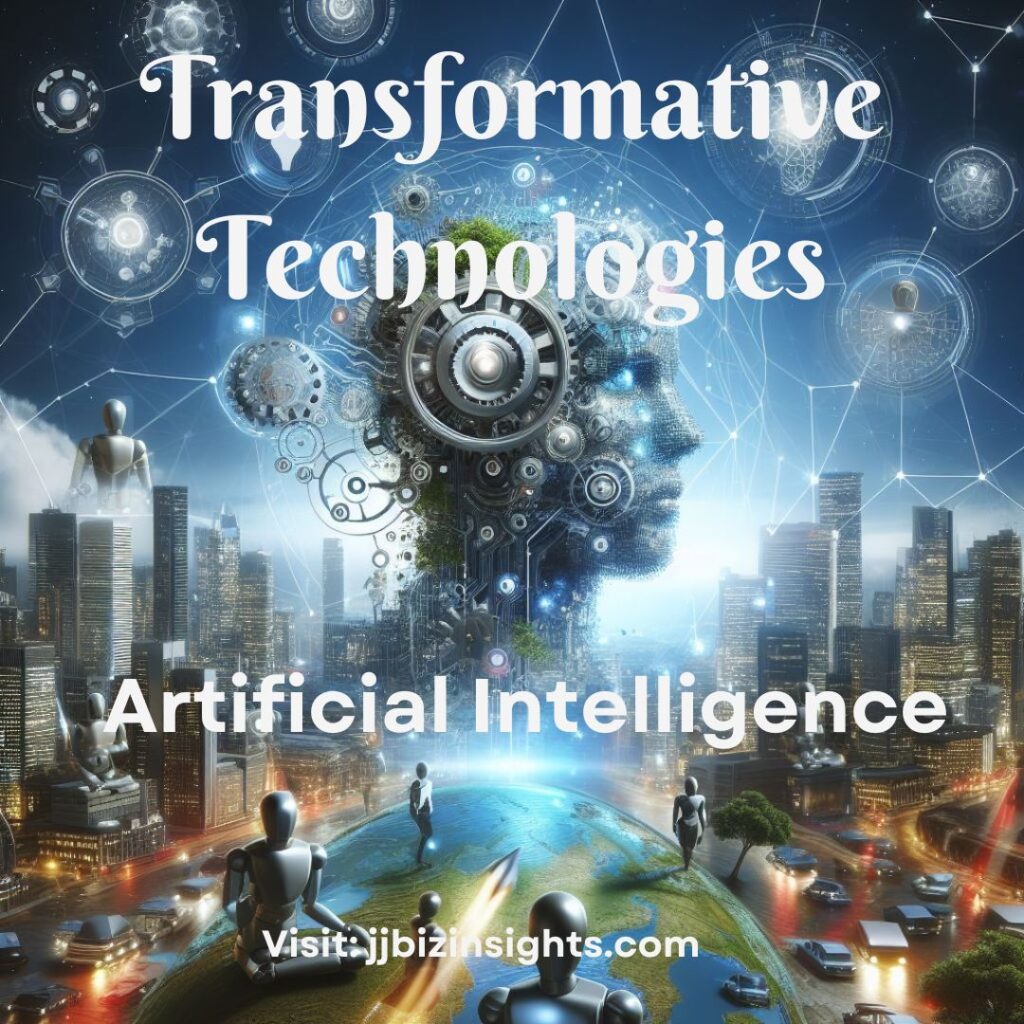Transformative Technologies Shaping Our Future: A Dive into the Cutting Edge.
The world is experiencing a continuous evolution driven by transformative technologies. These innovations are not just shaping a more advanced future, they are fundamentally changing the way we live, work, and interact with the world around us. This blog post delves into some of the most prominent transformative technologies that are making significant waves across various sectors.
Mobile Technology: The Power in Your Pocket
Mobile devices have become omnipresent, serving as gateways to communication, information, and commerce. CEOs recognize their transformative power, with 71% acknowledging their greater importance than even IoT and cloud solutions for digital transformation. Smartphones and tablets facilitate instant connections, access to a wealth of information, and drive the booming mobile commerce industry.
Transformative Technologies: Artificial Intelligence: The Engine of Automation and Personalization

Artificial intelligence (AI) is revolutionizing various fields with its ability to automate tasks, generate insights through predictive analytics, and personalize experiences. From chatbots interacting with customers to recommendation engines suggesting products, AI contributes to enhanced efficiency, data-driven decision-making, and improved user experiences.
Transformative Technologies: Blockchain Technology: Building Trust in Transactions
While often associated with cryptocurrencies, blockchain technology offers much more. It establishes a secure, transparent system for recording transactions, ensuring their immutability and traceability. This technology has vast applications in supply chain management, finance, and even identity verification, where building trust is paramount.
Transformative Technologies: Cloud Computing: Embracing Scalability and Flexibility
Cloud computing has transformed how businesses operate by offering on-demand access to computing resources. Cloud services provide organizations with scalability, cost-effectiveness, and flexibility. Businesses can store data, run applications, and collaborate seamlessly in the cloud, eliminating the need for expensive on-premise infrastructure.
Internet of Things: Connecting the Physical and Digital Worlds
The Internet of Things (IoT) represents a network of everyday objects embedded with sensors and internet connectivity. These devices collect data, enabling automation and generating insights. Smart homes, wearable health monitors, and industrial sensor networks are just some examples of how IoT is transforming various aspects of our lives.
Augmented Reality (AR) and Virtual Reality (VR): New Frontiers of Experience
Augmented reality (AR) overlays digital information onto the real world, enhancing our perception and interaction with the environment. In contrast, virtual reality (VR) immerses users in completely simulated environments. Both AR and VR have vast applications in areas like gaming, education, training, and design, blurring the lines between the physical and digital worlds.
Edge Computing: Processing Power at the Source
Edge computing brings processing power closer to the source of data, reducing latency and enabling real-time applications. This technology is crucial for applications like autonomous vehicles, smart cities, and industrial automation, where immediate responses are critical.
Autonomous Mobility: Reshaping Transportation and Logistics
The development of autonomous vehicles, drones, and delivery robots is transforming the way we travel and manage logistics. These technologies hold immense potential to improve efficiency, safety, and accessibility in the transportation sector.
Gene Sequencing and Editing: The Future of Healthcare
Advancements in gene sequencing and editing are opening up new possibilities in healthcare. These techniques allow for personalized medicine, early disease prevention, and even agricultural improvements by understanding the genetic makeup of organisms.
Living Therapies: Revolutionizing Healthcare with Genetics
Living therapies utilize genetic tools to create novel treatments for various diseases. This holds significant promise for revolutionizing healthcare by offering personalized, targeted approaches to combatting illnesses.
The Future of Transformative Technologies
The transformative technologies highlighted here represent just a glimpse into the vast spectrum of innovations shaping our future. As these technologies continue to evolve and converge, we can expect even more profound changes in the way we live, work, and interact with the world around us. It is crucial to stay informed about these transformative technologies and engage in responsible discussions about their potential benefits and challenges to ensure their positive impact on our future.
Setting the Stage for Success: Key Questions for a Smooth Tech Transformation Source: Mckinsey
Embarking on a tech-forward transformation journey requires a clear understanding of your destination and starting point. Companies often struggle with incomplete information on both fronts, leading to confusion and potential derailment. To pave the way for a successful transition, consider these crucial questions:
1. Defining Your Tech Aspirations:
- What outcomes are you seeking from technology? (e.g., faster development cycles, enhanced customer experiences)
- Which strategic goals hold the highest priority? (e.g., improved operational efficiency, increased revenue)
- What are your most pressing challenges, and what are their root causes?
2. Assessing Your Current Tech Landscape:
- Have you implemented any of the ten “tech-forward plays” outlined by McKinsey?
- Does your C-suite prioritize tech transformation as a top two strategic area?
- How effectively does your technology function support your overall business goals and digital aspirations?
- What past tech transformation efforts have you undertaken? What were the results? Identify both successes and areas for improvement.
- What potential roadblocks could hinder the pace of your transformation journey? Consider resource availability (capital, talent, etc.).
By answering these questions honestly and comprehensively, you can set a solid foundation for your tech transformation journey, increasing your chances of achieving the desired outcomes and navigating challenges effectively.
Unlocking Data Democracy: Balancing Transparency and Security with Data Anonymization and Masking